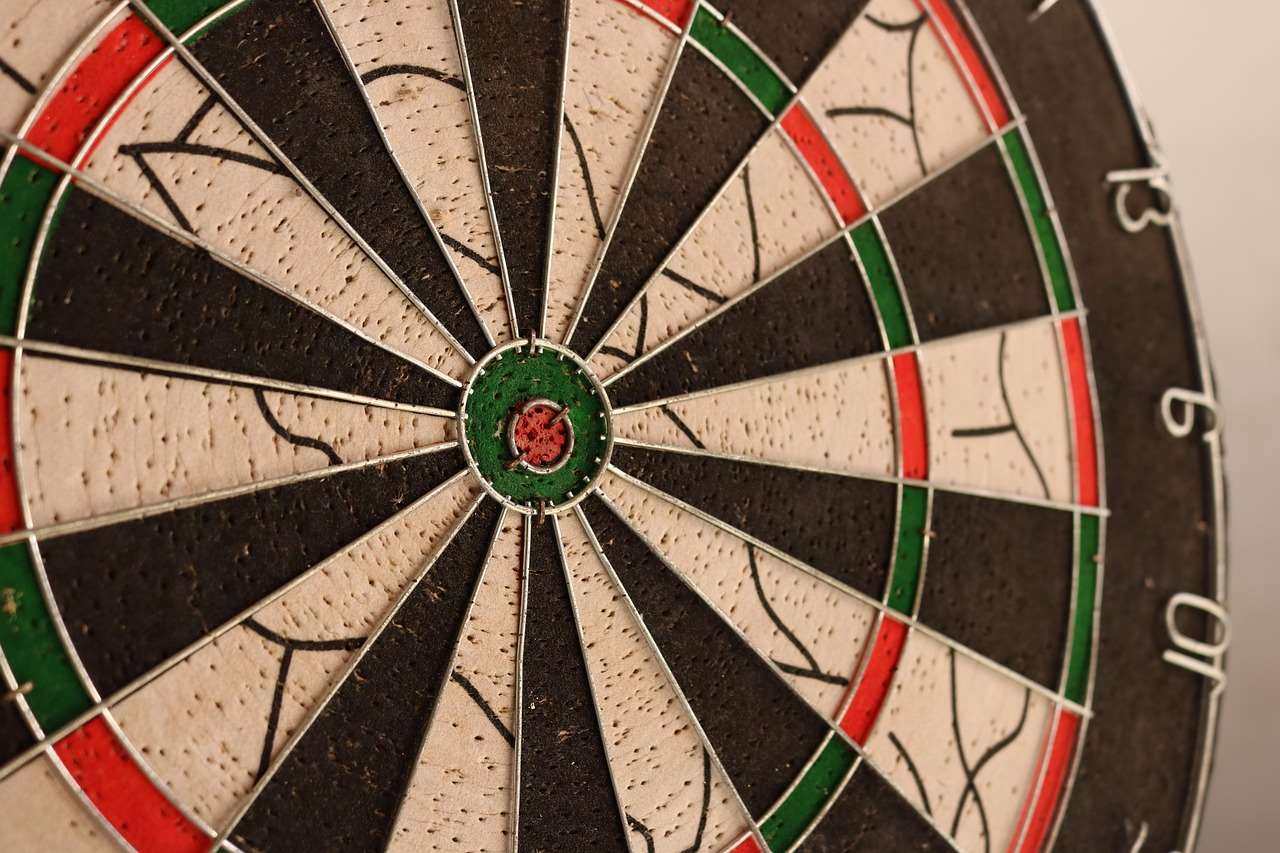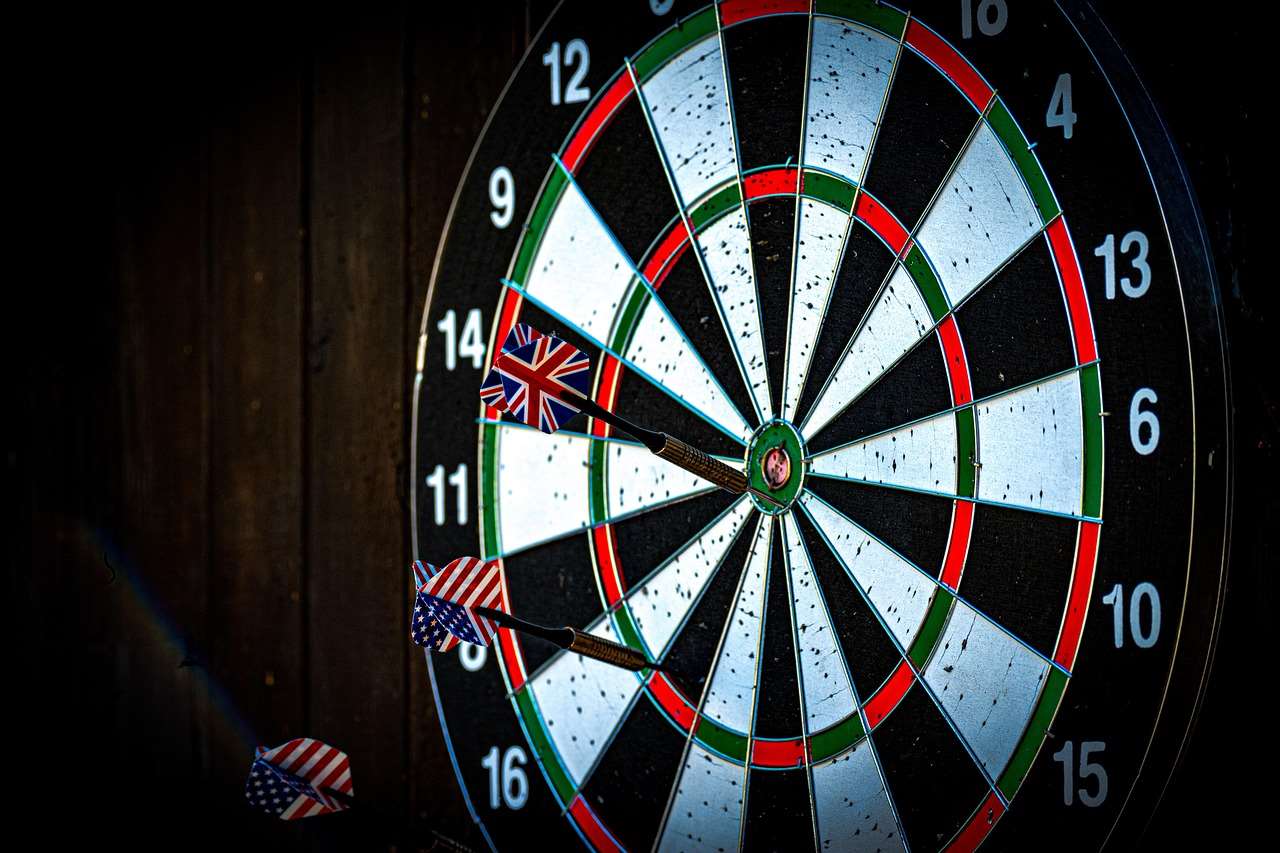When diving into the world of darts, two games stand out: Cricket and 501. The core difference lies in their objectives: Cricket is about claiming numbers and closing them out, while 501 is a race to zero. This article explores the fascinating contrasts in Cricket vs 501: comparing strategy and gameplay, covering scoring systems, strategic approaches, and overall gameplay experiences.
 Still Using Pen & Paper (or a Chalkboard)?!
Still Using Pen & Paper (or a Chalkboard)?! 
Step into the future! The Dart Counter App handles all the scoring, suggests checkouts, and tracks your stats automatically. It's easier than you think!
Try the Smart Dart Counter App FREE!Ready for an upgrade? Click above!
Understanding the Basics: Cricket vs 501
Before we delve into the strategic nuances, let’s solidify our understanding of the fundamental rules of each game.
Cricket: A Game of Numbers and Territory
In Cricket, players aim to claim and close specific numbers on the dartboard – typically 20, 19, 18, 17, 16, 15, and the bullseye. To “open” a number, a player must hit it three times. Subsequent hits on an open number score points, but only for that player. Once a player has hit a number three times (closing it), no further points can be scored on that number by that player. However, other players can still score on that number until they also close it. The first player to close all required numbers and have a score equal to or higher than their opponents wins the game. If a player closes all numbers before their opponents, but their score is lower, they must continue playing until their score surpasses their opponents’.
501: The Race to Zero
501 is a more straightforward game of subtraction. Each player starts with 501 points and aims to be the first to reach exactly zero. Players take turns throwing three darts, and the total score of each turn is subtracted from their remaining total. The final dart must be a double (or the bullseye, which counts as double 25) to reach zero exactly; otherwise, the score reverts to the previous round’s total. For example, if a player needs 32 to win, they must hit double 16. If they hit single 16 instead, the round doesn’t count, and they start the next round with the same score they had before.

Strategic Differences: Planning Your Moves
The contrasting objectives of Cricket and 501 necessitate markedly different strategic approaches. Let’s examine the key strategic considerations in each game.
Cricket Strategy: Offense and Defense
Cricket strategy is a blend of offensive and defensive tactics. Key elements include:
- Choosing Your Numbers: Selecting which numbers to open first is crucial. The 20 is generally favored for its high scoring potential.
- Blocking Opponents: If an opponent is scoring heavily on a particular number, closing it becomes a priority, even if you haven’t scored on it yourself. This defensive move can cripple their scoring.
- Accumulating Points: Once you’ve closed several numbers, accumulating points is essential to stay ahead. This requires precision and targeting open numbers effectively.
- Playing Mind Games: Some players deliberately leave a number open, inviting their opponent to score, then close it at a strategic moment, swinging the momentum.
Effective Cricket strategy demands a keen understanding of your opponent’s strengths and weaknesses, as well as the ability to adapt your game plan as the match unfolds.
501 Strategy: Accuracy and Efficiency
501 strategy revolves around maximizing scoring efficiency and minimizing wasted darts. Important aspects include:
- High Scoring: The initial rounds focus on reducing your score as quickly as possible. This often involves aiming for the 20s and 19s.
- Setting Up Finishes: As you approach a checkout, strategically setting up a double becomes paramount. This might involve leaving yourself with a manageable double combination.
- Knowing Your Checkouts: Familiarity with common checkout combinations (e.g., 32 = double 16) is crucial for efficient finishing. Many professional players memorize a wide range of checkout combinations.
- Avoiding Busts: Players must be mindful of “busting” – exceeding zero or failing to finish on a double. A “bust” wipes out the entire round’s score and reverts to the previous score.
501 is a game of precision and calculated risk. A player who can consistently hit high scores and convert checkouts efficiently will typically prevail.
Gameplay Experiences: Tempo and Intensity
The differing strategies in Cricket and 501 influence the overall gameplay experience, creating distinct tempos and levels of intensity.
Cricket: A Tactical Battle
Cricket often involves a slower, more deliberate pace than 501. Players carefully assess the board, evaluate their options, and weigh the offensive and defensive implications of each throw. The game can swing dramatically as players vie for control of key numbers. Momentum shifts are common, and a single well-timed close can change the course of the match. The mental aspect of Cricket is significant, as players try to anticipate their opponents’ moves and exploit their weaknesses. You may consider looking into alternative darts rules for home play, which can be great for experimenting with different strategies and enjoying the game in a relaxed setting.
501: A Fast-Paced Duel
501 is generally a faster-paced, more direct game. Players aim to score as heavily as possible each round, creating a sense of urgency and intensity. The game often comes down to a thrilling finish, with both players vying for the crucial double. The pressure of hitting the winning double can be immense, and the ability to perform under pressure is a key determinant of success. The focus is on individual performance and accuracy, creating a head-to-head duel between players. To help beginners enjoy the game, you can explore adapting darts rules for beginners to make the experience more accessible and less intimidating.

Scoring Systems: Complexity and Simplicity
The scoring systems in Cricket and 501 contribute to their unique character.
Cricket Scoring: Strategic Accumulation
Cricket scoring can seem complex at first, but it adds a layer of strategic depth. Players must not only hit the right numbers but also manage their score effectively. A player can run up a significant lead in points, only to lose if their opponent closes all the numbers first. This dynamic creates interesting tactical decisions, such as whether to continue scoring on an open number or focus on closing it. Handicaps are often used to balance different skill levels, as outlined in how to make darts fairer with handicap rules, ensuring a competitive game for all.
501 Scoring: Straightforward Subtraction
501 scoring is simple and intuitive. Each round’s score is subtracted from the player’s total, providing a clear and immediate measure of progress. The simplicity of the scoring system allows players to focus on their throwing technique and strategic decision-making without being bogged down by complicated calculations. For novice players, learning simplified 501 game rules for novice players can make the game even more enjoyable.
Choosing the Right Game: Skill Level and Preferences
The best game for you depends on your skill level and personal preferences.
Cricket: A Game for All Skill Levels
Cricket is often favored by players of varying skill levels because it allows for strategic play even if you’re not a consistent high scorer. The ability to block opponents and control the board can be just as important as hitting the 20s. Also, consider adapting dart game rules for children, which can make Cricket more accessible for younger players and families.
501: A Test of Precision
501 is generally considered a more challenging game, demanding a higher level of accuracy and consistency. It’s a great choice for players who enjoy a fast-paced, competitive environment and want to test their dart-throwing skills to the limit. If you find standard 501 too challenging, explore modifying rules for mixed-level dart players to create a more balanced playing field.

Advanced Strategies and Tips
Mastering either Cricket or 501 requires more than just understanding the rules; it involves developing advanced strategies and honing your skills.
Cricket: Number Selection and Score Management
Advanced Cricket Strategy: Choose your numbers wisely based on your strengths and weaknesses. If you’re not a consistent 20 hitter, focus on the 19s or 18s. Master the art of score management. Know when to score and when to close to maximize your advantage. A key element to consider is understanding your opponent’s playing style, and learning to predict their next moves.
Cricket Tip: Practice your closing shots. Being able to close a number with one or two darts can be a game-changer.
501: Checkout Combinations and Mental Toughness
Advanced 501 Strategy: Memorize common checkout combinations and practice setting them up. A strategic approach to checkouts can greatly improve your winning percentage. Also work on mental toughness. Staying calm under pressure and focusing on your technique can make all the difference.
501 Tip: Practice doubles relentlessly. Hitting doubles consistently is crucial for finishing 501.
Cricket vs 501: Choosing Your Weapon
The decision of Cricket vs 501: comparing strategy and gameplay leads to the question of which game is right for you. Ultimately, the best choice depends on your personal preferences, skill level, and the type of gameplay experience you’re seeking. Some players enjoy the strategic complexity of Cricket, while others prefer the fast-paced intensity of 501. Experiment with both games and discover which one resonates with you.

Darts Beyond the Basics
Beyond the core games of Cricket and 501, the world of darts offers a wealth of variations and opportunities for exploration. Here are some alternative avenues to enhance your darting experience:
- Fun Dart Game Variations: Explore a multitude of dart game variations, each offering unique challenges and gameplay dynamics. This can bring a breath of fresh air to your darting sessions and cater to diverse player preferences. If you are interested, check out fun dart game variations with modified rules.
- Social Darts: Darts can be a fantastic way to liven up social gatherings and parties. Introducing creative dart rules designed for fun and interaction can make your event more memorable. You can find inspiration in creative dart rules for parties and social gatherings.
- Darts in Small Spaces: Even if you have limited space, you can still enjoy a game of darts with some adaptations. Discover tips and tricks to make darts work in smaller environments, ensuring that space is no barrier to your darting passion. See adapting darts rules for small spaces: tips and tricks.
The Final Throw: Which Game Wins?
There’s no definitive “winner” in the debate of Cricket vs 501: comparing strategy and gameplay. Both games offer unique challenges and rewards, catering to different playing styles and preferences. Cricket emphasizes strategic thinking, board control, and adaptability, while 501 focuses on precision, high scoring, and mental fortitude. Whether you prefer the tactical maneuvering of Cricket or the fast-paced action of 501, the most important thing is to enjoy the game and challenge yourself to improve.

So, pick up your darts, choose your game, and start throwing! Experiment with both Cricket and 501 to discover which one you enjoy more. Practice regularly, develop your strategies, and most importantly, have fun. Whether you’re a seasoned pro or a complete beginner, the world of darts has something to offer everyone. Now that you understand the key differences between Cricket vs 501: comparing strategy and gameplay, take your newfound knowledge to the oche and start hitting those targets!
Hi, I’m Dieter, and I created Dartcounter (Dartcounterapp.com). My motivation wasn’t being a darts expert – quite the opposite! When I first started playing, I loved the game but found keeping accurate scores and tracking stats difficult and distracting.
I figured I couldn’t be the only one struggling with this. So, I decided to build a solution: an easy-to-use application that everyone, no matter their experience level, could use to manage scoring effortlessly.
My goal for Dartcounter was simple: let the app handle the numbers – the scoring, the averages, the stats, even checkout suggestions – so players could focus purely on their throw and enjoying the game. It began as a way to solve my own beginner’s problem, and I’m thrilled it has grown into a helpful tool for the wider darts community.